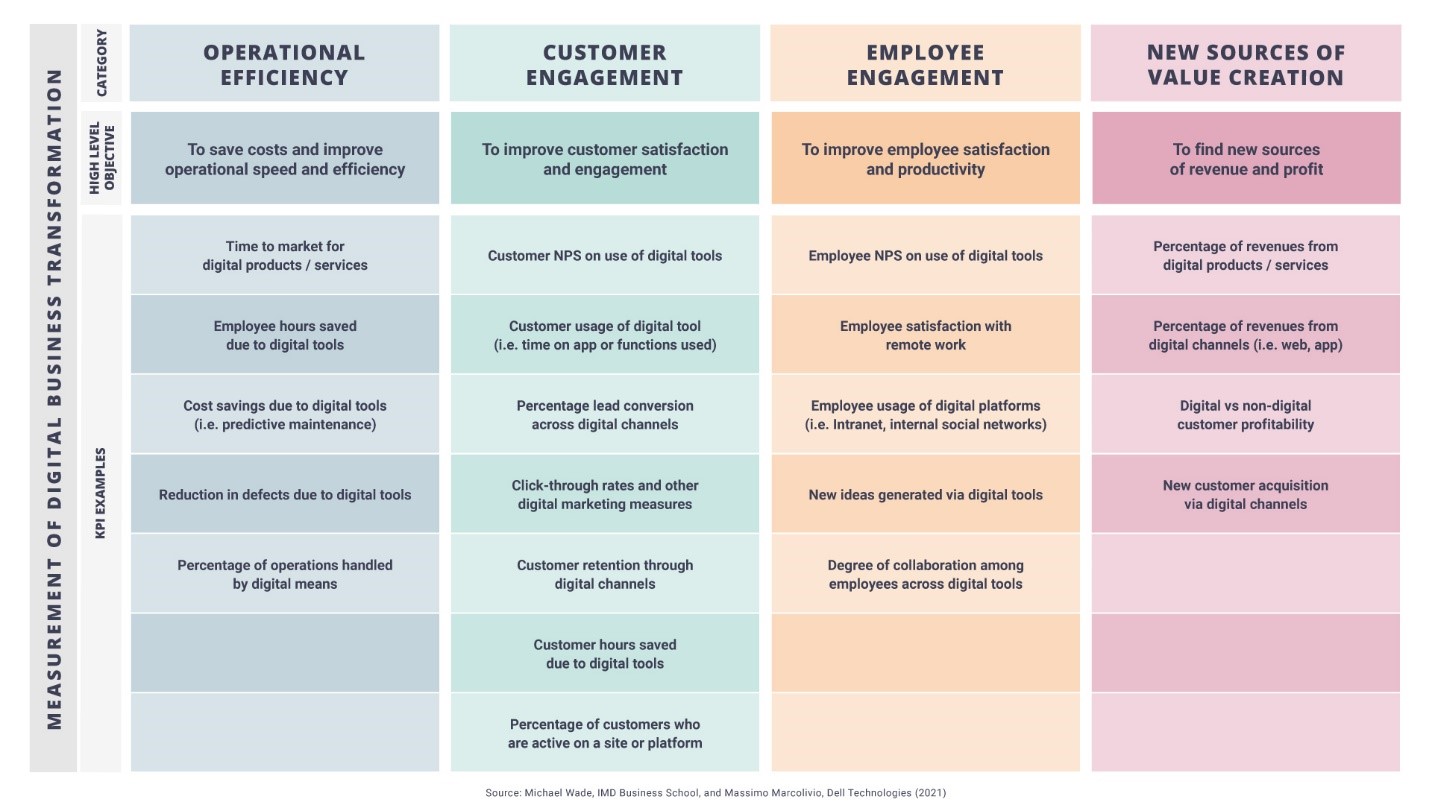As digital business transformation has become vital, management is willing to embark on initiatives that can be expensive, require time and involve several people.
The issue is that almost 90% of digital transformation projects fail! Insufficient measurement is one of the causes: how can progress and results be assessed?
In an article on The Digital Transformation People, IMD Professor Michael Wade and I propose to first define clear objectives and then organize measures into four categories:
-
- Operational efficiency
- Customer engagement
- Employee engagement
- New sources of value creation
These categories relate to how digital solutions can positively impact performance, and for each category, different KPIs can be identified (table below).

The response to the article indicates that measurement is a top priority. In fact, all the categories resonate, while the importance of each KPI obviously depends on the context. For instance, some organizations show particular interest in “time to market”. Others focus on the “percentage of revenues from digital products or services”, and map all the digital touchpoints along the customer journey. The KPIs of “operational efficiency” can perfectly include sustainability aspects, like water and energy management.
The discussion has started: we remain fully available for comments, questions, and ideas!
